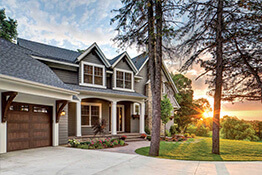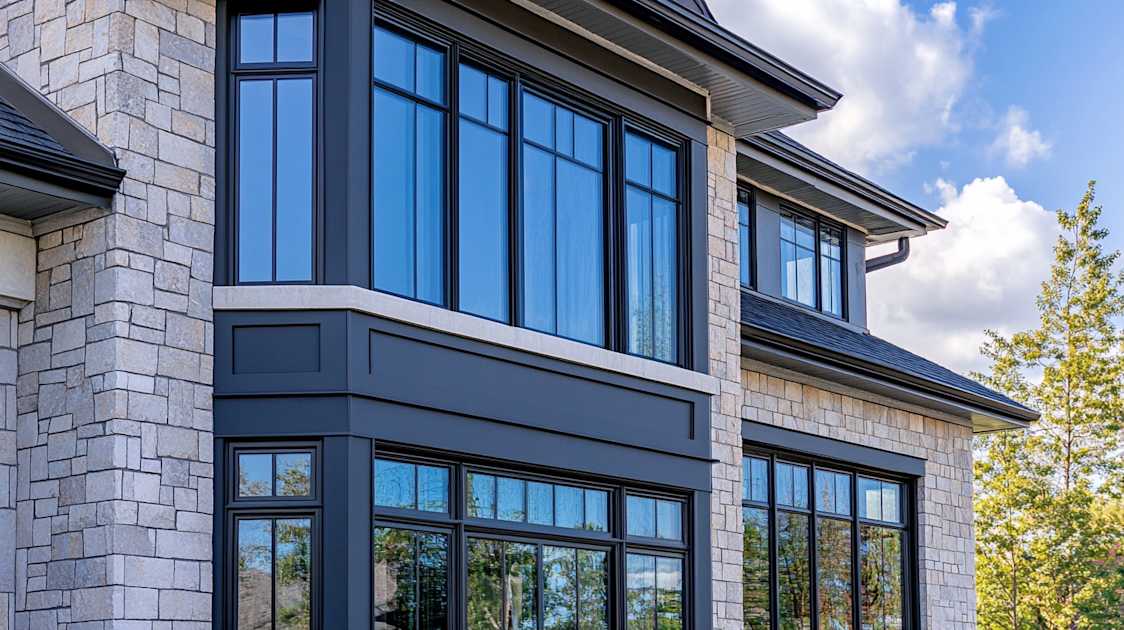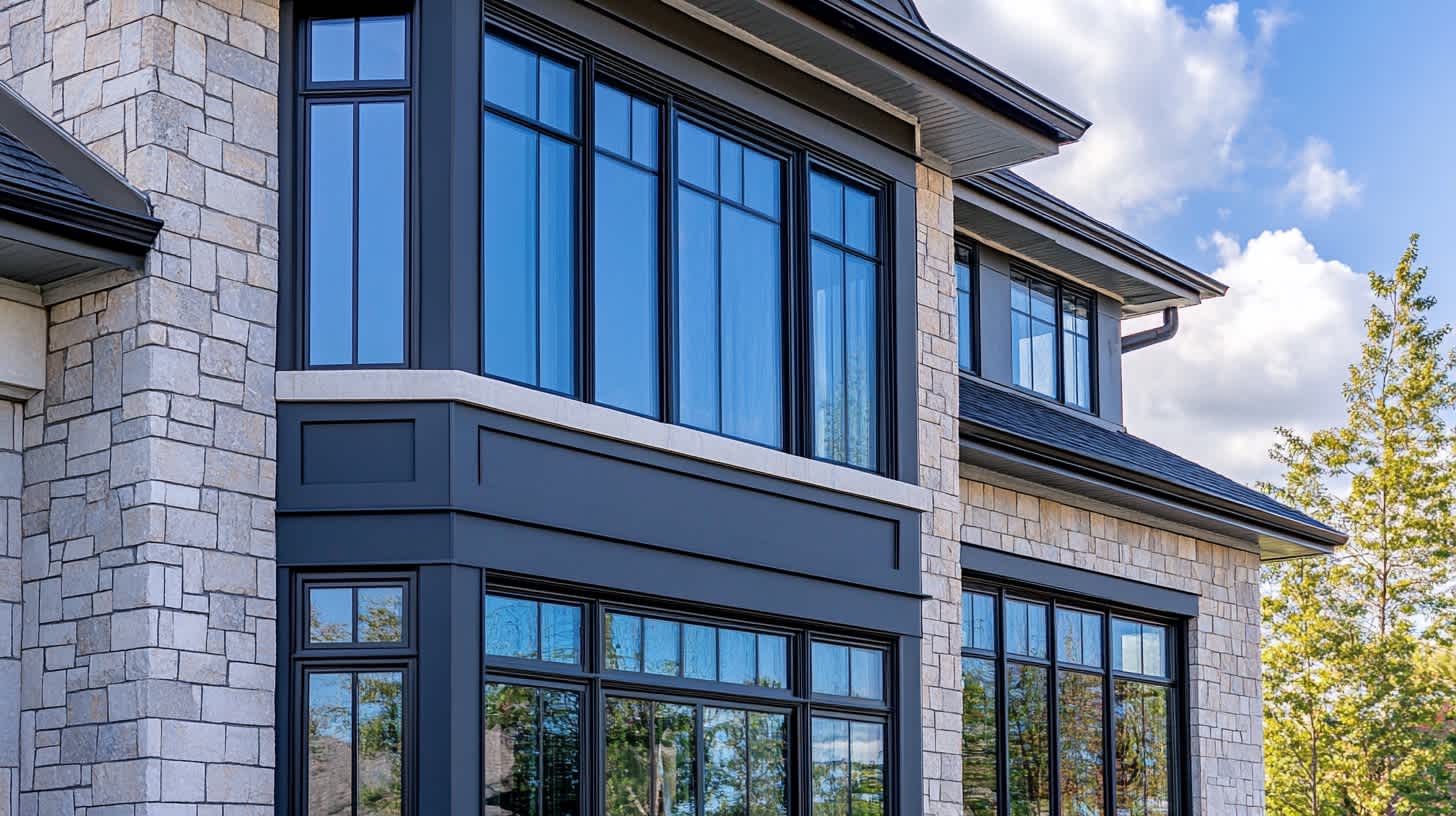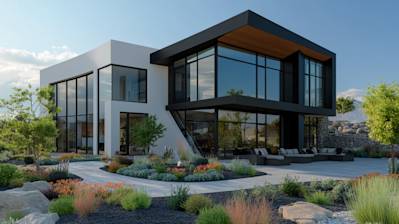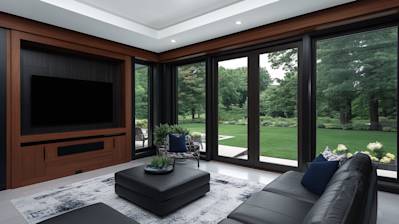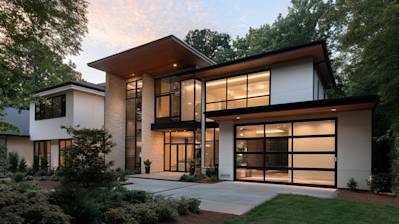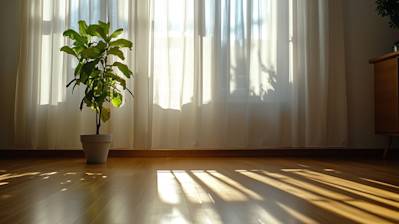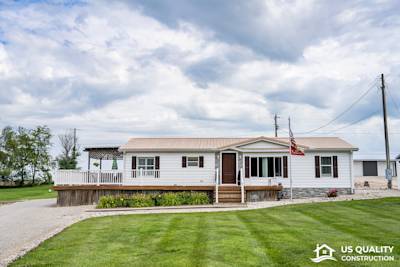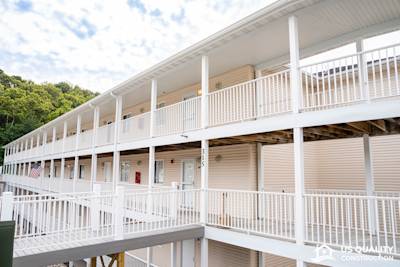The windows of your home, or any building for that matter, are more than just openings that allow fresh air and natural light to flow inside. They also serve a crucial role in dictating the overall appearance and style of a structure. With several different types of windows available, choosing the right one can accentuate the charm and character of your building while offering practical benefits.
This blog post seeks to uncover all there is to know about the diverse types of windows – your ultimate guide to understanding and picking the perfect windows for your home or building project.
Understanding the Importance of Choosing the Right Types of Windows
Before we delve into the specifics of different window types, it's important to understand that your choice will significantly impact the aesthetic appeal, comfort, and energy efficiency of your home. With the right selection, you can optimize natural light, enhance ventilation, and bolster your property's curb appeal. Equally critical is the improvement in energy efficiency, as well-chosen windows can help lower utility costs.
Now, let's explore the types of windows that you can find in today's market.
Single-Hung vs. Double-Hung Windows
Single-hung and double-hung windows are the most common types of windows. They are popular for their traditional look and easy operation.
In single-hung windows, the bottom pane or sash moves vertically, while the upper one stays stationary. Hence, they only allow half the window area to be open at any given time.
On the contrary, in double-hung windows, both sashes can move up and down. This type of window provides better ventilation as you can open the top and bottom sashes simultaneously.
Casement Windows: The Breeze Catchers
Casement windows feature a hinge on one side to swing open like a door using a crank or lever. With the entire window opening, they allow for maximum ventilation. These windows offer an unobstructed view as they do not have a rail, unlike single-hung or double-hung windows.
Awning Windows: Masters of Ventilation in Any Weather
Operating in a way similar to casement windows, but hinged at the top, awning windows push out to open. This design allows air to stream in freely while shielding your room from rain or debris.
Picture Windows: Capture the Outdoors
Picture windows, also known as fixed windows, don't open at all. They are typically large and designed to maximize your view and daylight exposure. These windows are perfect for those mesmerizing landscapes or picturesque cityscape views.
Sliding Windows: Simple and Functional
Sliding windows represent a contemporary, practical design where windows slide horizontally over the other window panes. It operates similarly to a sliding door and is excellent for wide window arrangements.
Bay and Bow Windows: Style and Space Combined
Bay and bow windows protrude from the home, creating a beautiful arch. Bay windows are typically a combination of three windows of varying sizes, whereas bow windows have four or more of the same size. These windows provide extra interior space and are a fantastic way to capture panoramic views.
Frequently Asked Questions about Types Of Windows
What are double-hung windows?
Double-hung windows are a type of sash window that has two sashes that slide vertically up and down in the frame. They can open wide from either the top or the bottom but remain inside the frame so they don't protrude out to the exterior or interior of the house. This is a great type of window for rooms that face walkways, porches or patios.
Is a bay window the same as a bow window?
No, they are different. While both bay windows and bow windows protrude from the wall of the house and add extra living space, the main difference is in their structure. A bay window has three openings, available in angled projections. A bow window, usually, has four or five. Another difference is the shape when viewed from the exterior; bay windows form a sharper angle, whereas bow windows have a smoother curve.
What makes a picture window unique?
Picture windows are large, fixed windows that do not have glazing bars. This means that they are just a single pane of glass that doesn't open, creating an unobstructed view. They are often used in rooms where you want to maximize your view and light, and minimized obstruction by window components.
Why might someone choose sliding windows?
Sliding windows have sashes that slide in either direction within the window frame, one behind the other. People might choose sliding windows due to their easy-to-use design which requires no reaching – a great choice for hard-to-reach areas like over the kitchen sink. They are also a cost-effective choice and provide a modern aesthetic appeal to your home.
Can you describe what casement windows are?
Casement windows are those which are attached to their frame by one or more hinges at the side. These type of windows are hinged on the side and can either be left hand or right hand casement windows, this means they swing out to the side in a manner similar to a door. Casement windows provide excellent ventilation and have a great, unobstructed view to the outdoors.
What are awning windows?
Awning windows are hinged at the top and open outward from the bottom, like an awning. This allows for ventilation even during a light rain. Often used in basements, they're also popular in bathrooms thanks to their privacy and ventilation properties.
What's unique about hopper windows?
Hopper windows are hinged at the bottom and open inward from the top. This is exactly opposite to awning windows. The unique feature about this type of windows is that they offer a compact solution for ventilation in small spaces, like bathrooms or basement.
Pros and Cons of Various Types of Windows
Window installation is a significant part of any construction or renovation project. Knowing the benefits and drawbacks of each type of window can help you to make an informed decision based on your specific requirements and preferences.
Single-Hung Windows
Pros
- Cost-Effective: Among the various types of windows, single-hung windows are often the most affordable, making them a preferable choice for budget-conscious homeowners.
- Energy Efficient: Offering fewer operational sashes, they yield higher energy efficiency.
Cons
- Limited Ventilation: The fixed top sash doesn’t move, so they provide less ventilation compared to some other window styles.
- Difficult to Clean: Cleaning single-hung windows, especially from the outside, often requires professional assistance, adding to the maintenance cost.
Double-Hung Windows
Pros
- Excellent Ventilation: By permitting both the top and bottom sashes to open, double-hung windows provide superb ventilation.
- Ease of Cleaning: The tilt-in design of modern double-hung windows simplifies cleaning, even from outside.
Cons
- Higher Cost: Double-hung windows typically cost more than their single-hung counterparts. The additional sash mechanism leads to a higher price tag.
- Potential for Air Leakage: More moving sashes might lead to air leakage, potentially reducing the windows' energy efficiency.
Casement Windows
Pros
- Superior Ventilation: Casement windows swing outward, offering full ventilation from top to bottom.
- Enhanced Security: The design of casement windows includes hook-shaped locks embedded within the frame, increasing their security.
Cons
- Limited Size Options: Due to the weight considerations of the swinging sash, casement windows are generally not made in large sizes.
- Outward Swing: Windows that swing out could potentially interfere with walkways or patios, or be affected by wind and weather.
Sliding Windows
Pros
- User-Friendly Operation: Sliding windows are typically easy to operate, requiring a gentle push or pull to open or close.
- Maximized View: These windows tend to have thinner frames, offering an unobstructed view.
Cons
- Limited Ventilation: Sliding windows only allow one-half of the window to be open at any given time, reducing their ventilation capability.
- Potential Dirt Accumulation: Debris can collect in the rails of sliding windows, potentially impeding operation and requiring regular cleaning.
Bay and Bow Windows
Pros
- Increased Natural Light: Noteably larger than other window types, bay and bow windows offer an expanded view and allow more natural light into your space.
- Added Space: These window types provide added usable space, perfect for seating or storage.
Cons
- Higher Installation Cost: Given their size and complexity, bay and bow windows typically require professional installation and thus come with a higher upfront cost.
- Increased Maintenance: Due to their larger size, these windows may require more frequent cleaning and maintenance.
Picture Windows
Pros
- Excellent Views: Picture windows feature large, unobstructed glass panels allowing for maximum natural light and stunning views.
- Energy Efficiency: Because they are fixed and non-operational, picture windows are often very energy-efficient.
Cons
- No Ventilation: As they do not open, picture windows offer no ventilation.
- Potential Sun Damage: The increased sunlight allowed by picture windows can potentially lead to sun damage on furniture or flooring.
Knowing the pros and cons of different types of windows helps homeowners make an informed decision based on their unique needs, style preferences, and budget. Whether you choose single-hung, double-hung, casement, sliding, bay and bow, or picture windows, each type offers its own set of benefits and considerations.
Summary
There's definitely a lot to consider when it comes to the different types of windows available. With options ranging from the basic, classic single and double-hung models to elegant bay and bow windows, there's a style to suit every type of home and individual design preference. These different types of windows can serve various functions, from invite in natural light and warmth and providing a view to maintaining indoor temperature and adding value to your home.
So, whether this is a practical purchase to replace a damaged window or a fully thought out choice as part of a home remodel, knowing the different types of windows can help make better decisions. Energy efficiency, ease of cleaning, aesthetic appeal, and installation costs are all essential factors in the decision-making process. The right choice not only enhances the architectural design of your home but also goes a long way toward increasing comfort and potentially your home value too.
With all the various types of windows out there, making a decision might seem a bit overwhelming at first. However, understanding the specifics of each type, keeping your home's style in mind, and considering your budget will guide you towards the perfect windows for your space. Remember that it's not just about the style - functionality and practicality are equally important in ensuring that your new windows serve you well for many years. Don't fear the process. With a little bit of research, you'll find the ideal windows to suit your home’s needs.
About US Quality Construction
US Quality Construction, based in the heart of Kansas City, MO, is your go-to construction company catering to a variety of buildings and renovation needs. We're not just a construction company, but a team of passionate builders who are here to turn your vision into reality. Our wealth of experience and innovative approach means we whoop the competition every time when it comes to quality. Our experienced and friendly team is dedicated to offering top-quality services while maintaining strict adherence to deadlines and budgets. When it's about construction in the good ol' KCMO, you can count on us! Get in touch, let's make something awesome together.
Tags: double-hung windows, casement windows, bay windows,
